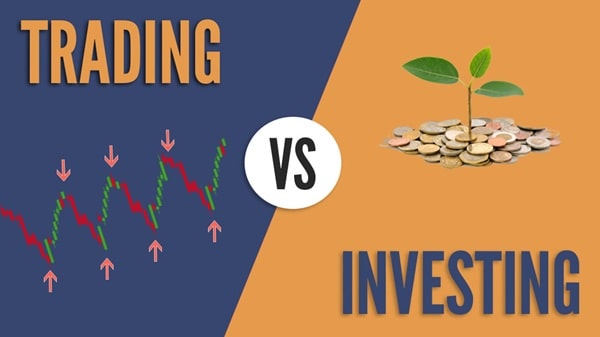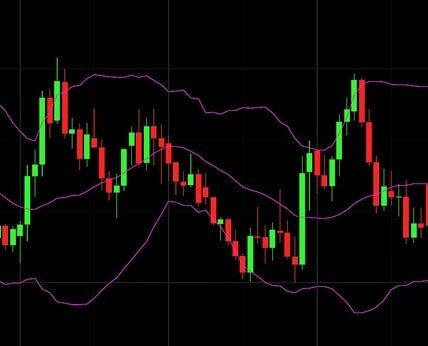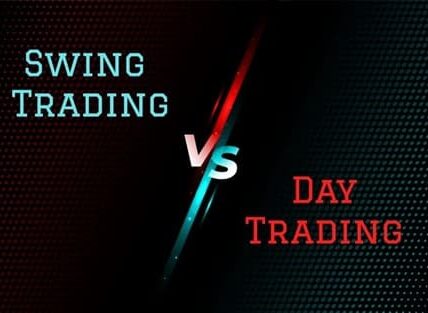In the world of finance, two of the most common ways to grow your money are trading and investing. While both aim to generate profits, they differ significantly in terms of approach, time horizon, risk level, and strategy. Understanding the difference between trading and investing can help you decide which one aligns better with your financial goals, risk tolerance, and lifestyle.
What Is Investing?
Investing means putting your money into financial assets such as stocks, bonds, mutual funds, or real estate for a long-term period—usually years or even decades. The main goal of investing is to build wealth gradually through capital appreciation, dividends, and interest income.
For example, when you buy shares of a company like TCS or Apple and hold them for years, you’re investing. You expect the company’s value to grow over time, which increases your investment’s worth. Investors typically follow a “buy and hold” strategy, focusing on the company’s fundamentals and long-term potential.
Key Features of Investing:
- Long-term approach (typically more than one year)
- Focus on value growth and compounding
- Lower transaction frequency
- Less emotional stress
- Relies on fundamental analysis (company earnings, balance sheets, etc.)
What Is Trading?
Trading, on the other hand, involves frequent buying and selling of financial assets—such as stocks, forex, or commodities—to profit from short-term price movements. Traders aim to make quick gains within days, weeks, or even minutes, depending on the type of trading they engage in.
For instance, a trader might buy Reliance Industries stock in the morning and sell it by the afternoon if the price rises by a few percentage points. Trading focuses more on market trends, price charts, and technical indicators rather than the long-term health of a company.
Key Features of Trading:
- Short-term approach (from minutes to a few months)
- High transaction frequency
- Relies on technical analysis and market trends
- Potential for quick profits or losses
- Requires constant market monitoring
Main Differences Between Trading and Investing

| Aspect | Investing | Trading |
| Time Horizon | Long-term (years or decades) | Short-term (minutes, days, weeks) |
| Goal | Wealth creation through compounding | Quick profits from price movements |
| Risk Level | Lower (if diversified) | Higher due to frequent market fluctuations |
| Approach | Buy and hold | Buy and sell frequently |
| Analysis Type | Fundamental analysis | Technical analysis |
| Market Monitoring | Occasional | Continuous |
| Taxation | Lower tax rates on long-term gains | Higher tax rates on short-term gains |
| Mindset Required | Patience and discipline | Quick decision-making and emotional control |
Advantages of Investing
- Wealth Creation Over Time: Investing allows your money to grow through the power of compounding. The longer you stay invested, the greater your potential returns.
- Lower Stress: Since investors don’t react to short-term market volatility, investing is less stressful compared to daily trading.
- Dividend and Interest Income: Long-term investors can earn passive income through dividends, interest, and capital appreciation.
- Suitable for Everyone: You don’t need to watch the market every day. It’s ideal for salaried individuals, business owners, or anyone focused on long-term goals like retirement or education.
Advantages of Trading
- Quick Returns: Skilled traders can make profits in a short time by capitalizing on daily price movements.
- Opportunities in Any Market Condition: Traders can make money in both rising and falling markets using long and short positions.
- High Liquidity: Since trades are executed frequently, money is not tied up for long periods.
- Excitement and Learning: Trading involves constant analysis and decision-making, which many find intellectually stimulating.
Risks Involved
While both trading and investing carry risks, trading risk is generally higher due to frequent exposure to price fluctuations and market volatility. A trader can lose money quickly if decisions are based on emotion or speculation.
Investing also carries risk, especially if done without proper research or diversification. However, long-term investors have a better chance to recover from short-term downturns.
Proper risk management, such as setting stop-loss orders for traders or diversifying portfolios for investors, can help minimize potential losses.
Which Is Better: Trading or Investing?
There’s no one-size-fits-all answer. It depends on your financial goals, knowledge, and risk tolerance.
- If you prefer a steady, long-term approach with minimal stress and can stay patient through market ups and downs, investing may suit you best.
- If you enjoy analyzing charts, making quick decisions, and handling risk actively, trading might be more appealing.
Many successful individuals even combine both — investing most of their capital for long-term growth and allocating a smaller portion for trading to take advantage of short-term opportunities.
Conclusion
Both trading and investing play crucial roles in financial markets. Trading brings liquidity and short-term price discovery, while investing builds long-term wealth and stability.
If you’re just starting, it’s wise to begin with long-term investing to understand how markets work before venturing into short-term trading. Remember, the key to success in both areas is discipline, research, and emotional control.








